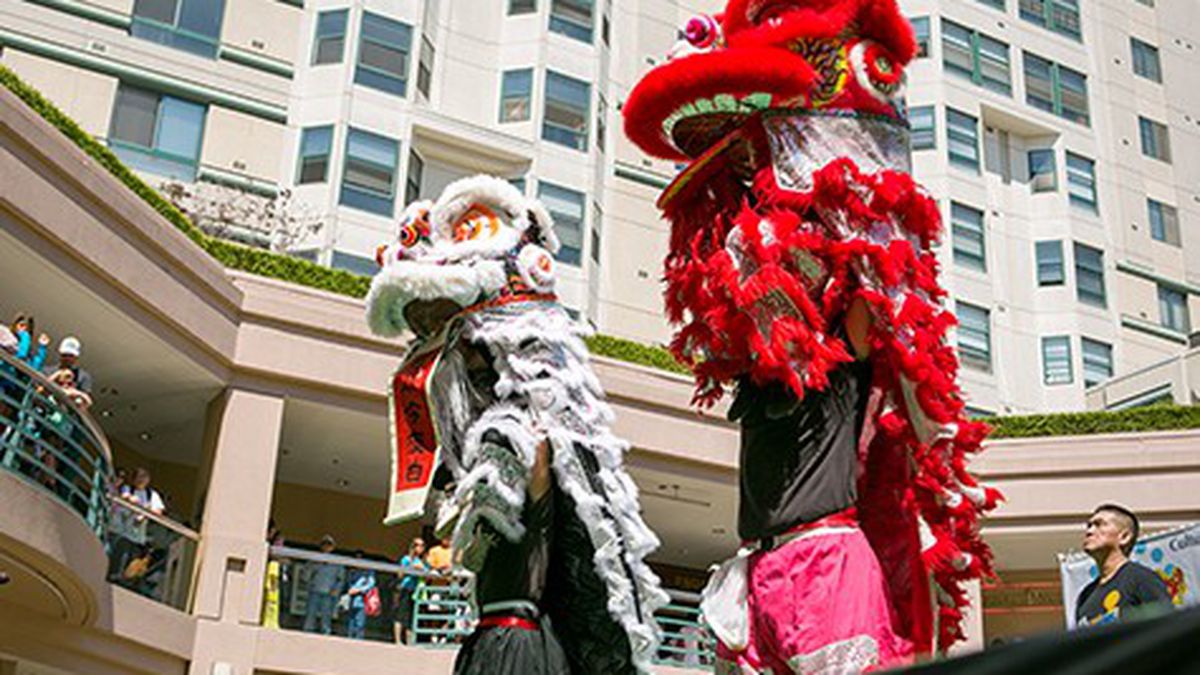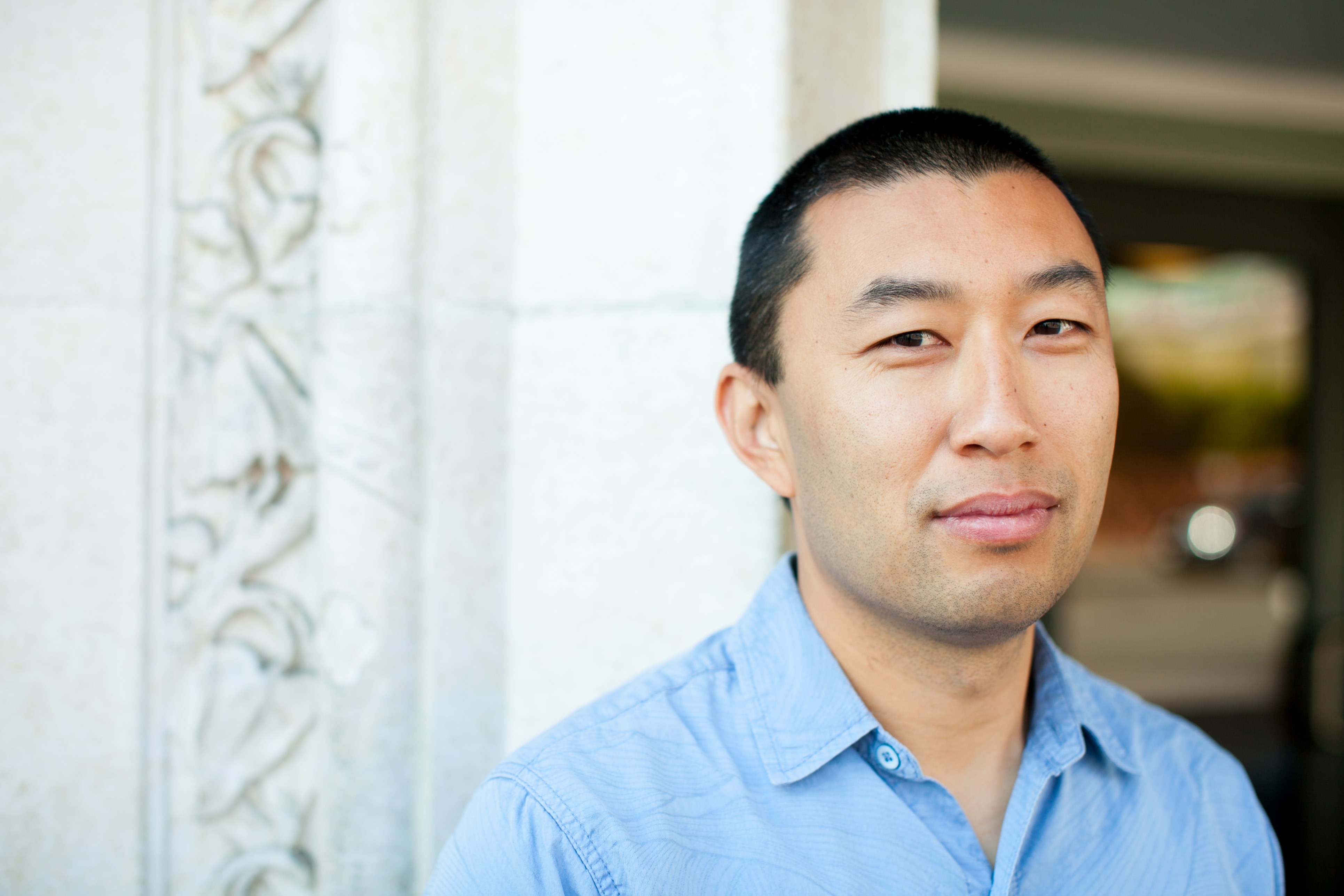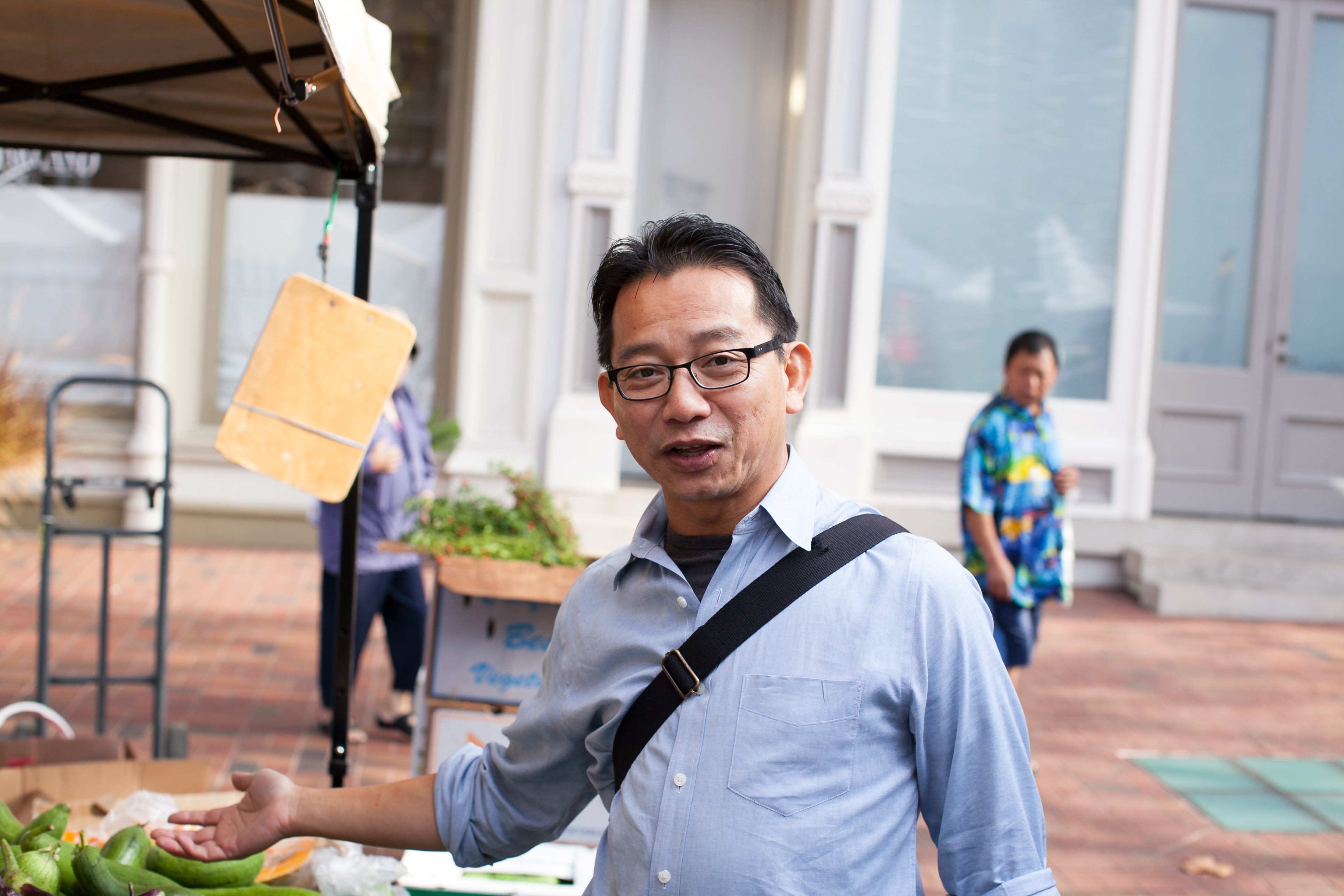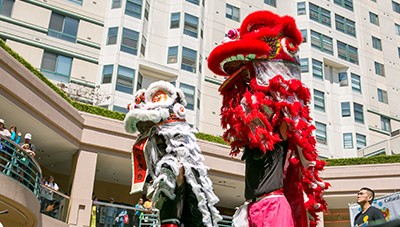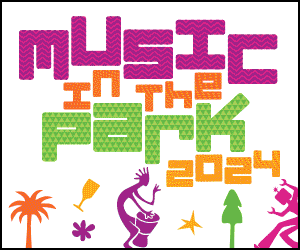On a late-August Saturday in Oakland Chinatown, a Taiwanese-American cover band performed a version of “Uptown Funk” to the great delight of the handful of middle-aged white couples gyrating at the foot of the stage. The 28th annual Oakland Chinatown StreetFest sprawled over the eight blocks that constitute Chinatown proper, and although the festival had just kicked off, Webster Street was beginning to fill up with tourists.
Sponsored by the Oakland Chinatown Chamber of Commerce, the two-day StreetFest is easily the single biggest event in Chinatown — the one time each year when the spotlight shines most brightly on the historic neighborhood. At a time when the entire city of Oakland is undergoing rapid changes, the festival is also, depending on who you talk to, either a symbol of Chinatown’s vibrancy, or a sign of how out of touch its leadership is.
To spend time in Oakland Chinatown is to risk falling in love with the place, especially if you go on a random weekday when there isn’t any special event scheduled. Day-to-day life is what sets the neighborhood apart: elderly Chinese doing their early-morning tai chi exercises at Madison Square Park, or squabbling good-naturedly in Cantonese at the Ruby King Bakery — a folded-up Sing Tao newspaper in their lap, the table scattered with crumbs from the flakiest egg custard tarts in town. If you want to buy a live fish to steam at home, or choose between a half-dozen varieties of fresh Chinese noodles, or eat a bowl of jook before the parking meters start running for the day, Oakland Chinatown is the place to be.
This is why folks who frequent the neighborhood talk about how Oakland Chinatown is a “working Chinatown” — a characterization that doubles as a jab at the trinket shops and tourist traps that dominate the more famous Chinatown across the bridge. And it’s also why StreetFest, for all its pomp and circumstance, might be the worst time to visit the neighborhood if you want to get a sense of Chinatown’s real flavor.
At no other time does the area feel quite so corporate than during StreetFest. Onstage, the emcee rattled off the list of sponsors, whose logos covered the large banner that served as a backdrop for the morning’s proceedings: Kaiser Permanente, Xfinity, Budweiser, Wells Fargo, Allstate. Later, about twenty local dignitaries with perfunctory connections to the neighborhood (someone from the Oakland Police Department, a person from the district attorney’s office, etc.) lined up and each offered his or her own two-minute variation on a theme of “why I love Chinatown.” It was a lot of glad-handing.
StreetFest included a full slate of cultural performances — a lion dance, kids doing choreographed martial arts routines to the Mortal Kombat theme song, and so forth. But the main emphasis of the festival was the tables and booths that lined the streets. They ran the gamut from community organizations to the Graton Resort & Casino to at least two different funeral homes that were — rather macabrely — offering discounts to the local Chinatown seniors that stopped by their displays.
The food, too, wasn’t exactly what Chinatown regulars would have expected: Taiwan Bento, a Taiwanese restaurant in Uptown, had set up a table, as had the downtown Korean takeout specialist E+M Catering. At another booth, a Southeast Asian vendor pressed thick branches of sugar cane into juice. The rest were your typical, generic festival food purveyors.
Noticeably missing were Oakland Chinatown restaurants. None had set up booths. Moreover, little of the food that was being sold seemed particularly Chinese. Instead, a small cluster of gourmet food trucks hawked wood-fire pizza and frozen custard.
The festival’s organizer, the Oakland Chinatown Chamber of Commerce, was founded in 1985 by a group of local business owners as a way to foster economic development in Chinatown. The chamber’s board is a mix of property owners, real estate agents, business owners, and corporate execs. Jennie Ong, the longtime executive director and the chamber’s only full-time paid staff member, has been putting StreetFest together since 1994. Besides the Lunar New Year Bazaar held in February, it’s the chamber’s signature event and its biggest source of revenue. The idea, Ong explained, is to attract people who don’t normally visit Chinatown, and, once they’re there, to show off all the things the neighborhood has to offer so that they’ll come back.
But the chamber isn’t without its critics. Sonny Le, a community activist and a former board and staff member of the Oakland Asian Cultural Center, doesn’t mince words in that regard. As Le sees it, there are really two Chinatowns. On the one hand, there’s an “upstairs” Chinatown that consists of property owners, lawyers, doctors, and real estate developers. Then, there’s the “downstairs” Chinatown, which includes the minimum-wage workers and the struggling immigrant-run businesses — marginalized folks who tend to be hidden from view during big events like StreetFest.
Who in Chinatown is speaking up for those “downstairs” people? From Le’s perspective, and that of other local Asian-American activists, the chamber’s efforts — which, in recent months, have included railing against Oakland’s minimum wage increase and advocating for extensive market-rate development — mostly benefit the developers, property owners, and landlords. “I don’t see anyone fighting for those businesses and workers in Chinatown,” Le said.
These issues have a particular urgency right now as Oakland Chinatown faces a crossroads. What may not have been obvious amid the upbeat atmosphere of the street festival is the grim reality that many Chinatown businesses aren’t doing so well. A recent walk around the block on 8th and 9th streets, between Webster and Franklin streets — the very heart of Chinatown — revealed no fewer than five empty storefronts. Meanwhile, the neighborhood’s large group of low-income seniors are particularly vulnerable to being displaced by Oakland’s citywide affordability crisis.
As other historic Chinatowns have been practically wiped out as a result of changing demographics and unchecked development, it’s worth asking: What’s the best way to save Oakland Chinatown?
Gentrification is often associated with socio-demographic shifts in which white newcomers displace longtime Black and Latino residents, but all around the country, ethnic enclaves similar to Oakland Chinatown are also in danger of being gentrified out of existence — or, at the very least, becoming a shadow of their former selves.
In Boston, an influx of luxury condominiums caused what had traditionally been a working class and predominantly Asian Chinatown to become increasingly affluent and white, according to a 2013 report on the gentrification of Chinatowns published by the Asian American Legal Defense Fund. In Washington, DC, the situation is even more dire: According to a Washington Post story published in July, only three hundred Chinese Americans are left in all of that city’s Chinatown, down from a high of 3,000 — and many of those who remain are embroiled in a protracted legal battle to prevent their landlord from demolishing their Section 8 building to make way for more luxury condos.
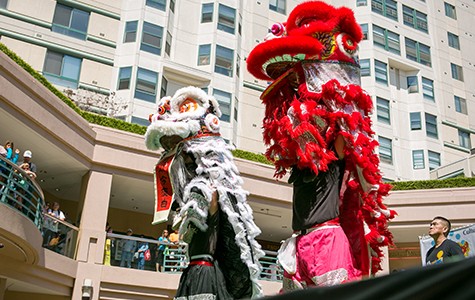
Lailan Huen, who runs a national anti-displacement initiative for the National Coalition for Asian Pacific American Community Development (whose West Coast office is located in Oakland), recently completed a nationwide tour of historic Chinatowns. In an interview, Huen said it’s overly simplistic to say that a Chinatown is “dying” just because some white people have moved in. But she confirmed that while a number of Chinatowns around the nation continue to thrive, the danger of displacement is very real.
DC’s Chinatown, she said, was “pretty much the worst” example. Once comparable in size to Oakland’s Chinatown, it now consists of about two city blocks — and even those are dotted with chain stores whose only connection to the old neighborhood are their architecture and signage. As the Washington Post story put it, “The historic Chinatown Garden restaurant shares a block with Panera Bread. The Chinese Community Church stands across from new high-rises.”
Huen explained that the Chinatowns, Little Tokyos, and other similar ethnic enclaves have always been vulnerable because of their proximity to downtown areas, where rents and property values tend to skyrocket during boom times. Over the years, Oakland’s Chinatown has also been impacted by these kinds of external pressures: Large sections of the old neighborhood were torn down in 1950 to make way for Interstate 880, and then again in the Sixties when the Webster Tube and Lake Merritt BART Station were built. Chinatown residents moved and rebuilt their community to adjust to each of these changes. And, for now, despite the occasional empty storefront, the neighborhood remains a mostly vibrant, bustling place — and one that’s still overwhelmingly Asian.
What’s frightening, though, is how quickly it can all fall apart — a matter of ten or fifteen years in the case of DC’s Chinatown, which began to change rapidly following the construction of a sports arena, the Verizon Center, in 1997.
And if the last vestige of Chinese residents really do get pushed out of DC’s Chinatown — or Oakland’s, for that matter — Huen fears that what remains won’t be much of a Chinatown at all. “You can have restaurants there, but it’s not real,” she said. “It’s basically like Disneyland for the gentrifiers.”
For those advocating to protect the cultural legacy of Oakland Chinatown, part of the problem is that the neighborhood is largely an enigma to members of the general public who aren’t involved in its day-to-day life — who know it as an occasional dim sum destination, perhaps, but nothing more.
It doesn’t help that, in recent months, the neighborhood has become a sort of token that gets trotted out whenever local media outlets decide to run stories critical of Oakland’s recent minimum wage increase. Inevitably, a shopkeeper or restaurant owner from Chinatown is the one quoted saying that he or she is “dying” as a result of the wage hike, or opining, ominously, that workers won’t benefit if all the businesses in the neighborhood shut down. (Four of the first ten results from a recent Google search for news stories about Oakland Chinatown were articles about the minimum wage.)
This is no coincidence — in part because, by most accounts, the transition to the higher wage has been difficult for many of the neighborhood’s small businesses. In addition, the Oakland Chinatown Chamber of Commerce has been an outspoken critic of Measure FF, the ballot measure responsible for raising the minimum wage — from $9 to $12.25 an hour — this past March. In one memorable headline-grabbing example, former chamber president and current board member Carl Chan described the minimum wage as the “final nail to the coffin.”
Chan, more than any other individual, is the public face of Oakland Chinatown. Emcee of this year’s StreetFest, consummate hobnobber, and wearer of innumerable hats, he’s known to many by his longstanding nickname: “the mayor of Chinatown.” In addition to his day job running Claremont Development (an East Bay real estate company), Chan is the chair of the Chinatown crime prevention council, chair of the board of directors for the nonprofit Asian Health Services, a board member of Visit Oakland, and a member or chairperson of a half-dozen other assorted committees in Oakland.
When I interviewed Chan and Ong at the Oakland Chinatown Chamber of Commerce’s second-floor office in the Pacific Renaissance Plaza, Chan joked that the reason he lives in Alameda is because, here in Oakland, “Everyone wants me to run for office.” Chan is popular in part because he’s a relentless cheerleader for anything and everything related to Chinatown. He’s also an unapologetic critic of the minimum wage increase and a champion of unfettered market-rate development, both in and around Oakland Chinatown — positions that are reflected in the stances taken by the chamber.
The story Chan and Ong tell about Chinatown’s recent decline is one familiar to those who have watched various touchstones of the Chinese community spread to the suburbs during the past decade. Call it the “99 Ranch Effect,” after the Los Angeles-based chain of Taiwanese-American mega-supermarkets that have spread all over the East Bay, with locations in Richmond, Concord, Fremont, Newark, Dublin, and Pleasanton. Open since 1998, the 35,000-square-foot Richmond location of 99 Ranch Market is typical in that it anchors an entire Asian-themed shopping mall — the Pacific East Mall. On weekends, a family can easily spend the better part of an afternoon here: a dim sum (or ramen or sushi) meal followed by a haircut, a grocery run to pick up hard-to-find imported ingredients and fresh seafood, and maybe even a couple rounds of karaoke — all tasks that, just a couple of decades ago, were almost exclusively the purview of traditional Chinatowns. Chan explained that the prices at 99 Ranch tend to be higher than what you’ll find at Chinatown’s mom-and-pop grocery stores, but for many, the wide aisles and vast parking lot are an irresistible draw. Meanwhile, the higher-end Chinese restaurants — the Koi Palaces of the world — have opened almost exclusively in these suburban Chinatowns, drawn, presumably, by the large swaths of available space and the prospect of a more affluent customer base.
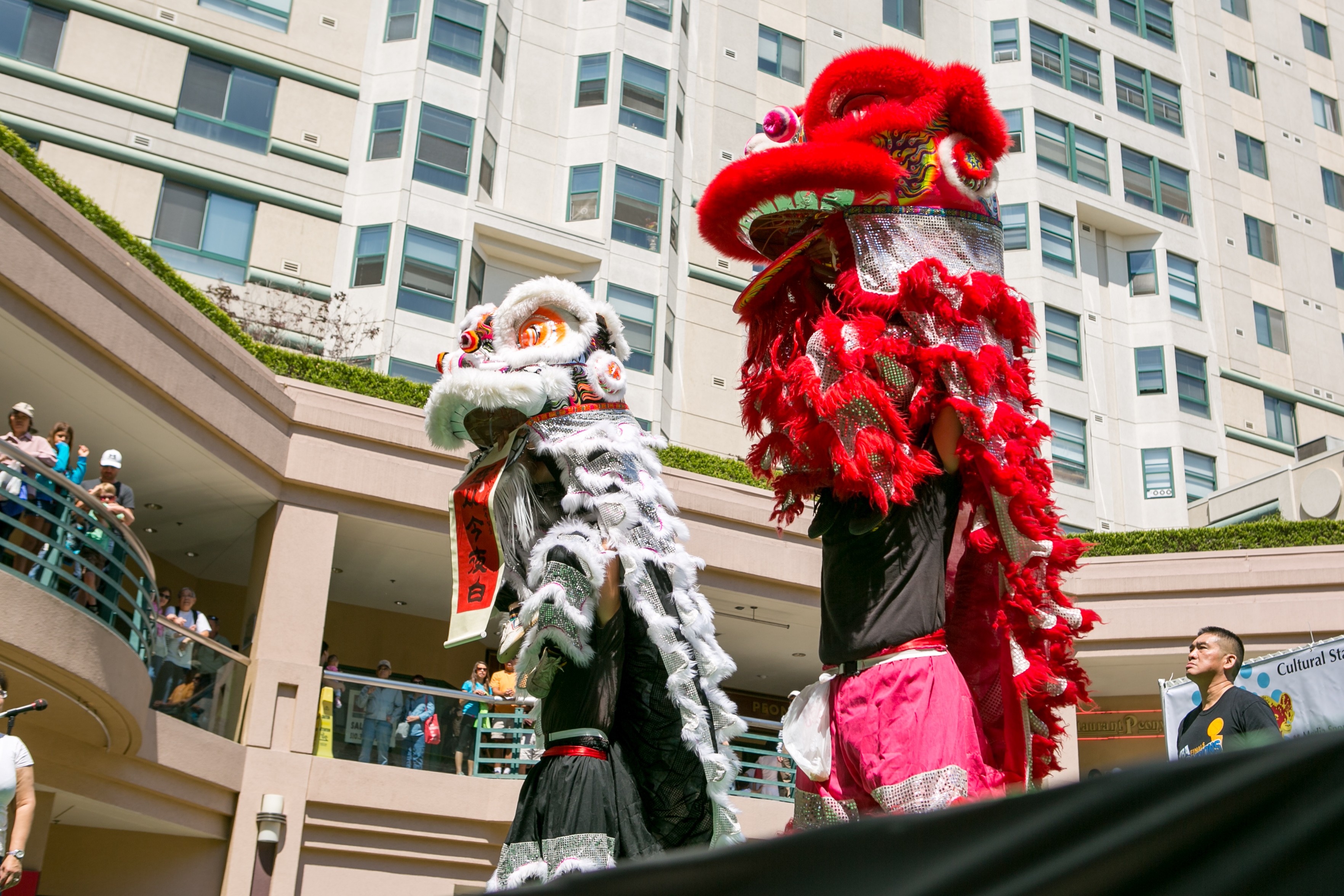
The upshot, Chan explained, is that more and more Chinese Americans who live in the East Bay suburbs are staying there to shop and eat — and even Oakland residents are choosing to frequent 99 Ranch and its associated businesses. For some shops and restaurants in Oakland Chinatown, that competition proved to be more than they could withstand. And, in Chan’s view, the minimum wage hike exacerbated a precarious situation. Business owners who were already struggling decided to close for good; those that had shut down for extended, unspecified “renovation” projects simply never reopened. One of the casualties was Legendary Palace, a dim sum restaurant and banquet hall that had been a Chinatown landmark since 1917 and was housed in a building owned by chamber president Ong’s husband’s family. According to Chan, the owners cited the minimum wage as one of the reasons they decided to close. (The dim sum house finally reopened earlier this month under new ownership and with a new name: Cinnamon Tree.)
From Chan and Ong and the chamber’s perspective, the answer to saving Oakland Chinatown from the 99 Ranch Effect is unbridled growth — especially more market-rate housing in the downtown area. “We all believe that housing is in huge demand. No matter how fast you are building, you can’t keep up with the demand,” Chan said. “You don’t have to be a rocket scientist.”
Chan argues that market-rate housing will bring an influx of affluent residents who will help build up Chinatown’s declining customer base — in essence replacing some of the spending power of those shoppers who have been drawn away by the siren call of 99 Ranch. And the chamber opposes requiring developers to build affordable housing, because Chan believes any added costs that result from such requirements will ultimately get passed on to the buyer, making a new home more expensive for younger, middle-class, first-time homebuyers. (One of the community benefits the chamber has pushed for in talks with developers is that local workers be hired to do the actual contracting, Chan said.)
In the end, the chamber has endorsed nearly every market-rate project that developers have brought to the table in and around Chinatown — including significant market-rate housing projects at the intersection of Webster and 12th streets, at Broadway and 8th Street, and at 7th and Harrison streets. Another redevelopment project, at 524 8th Street in Old Oakland, will convert an SRO (single-room occupancy hotel) that currently houses mostly low-income, Chinese-speaking residents into studio apartments intended for “a student with mom and dad paying, or a tech tenant who can’t afford three-grand a month in San Francisco,” as the developer told the San Francisco Business Times.
Chan said he could recall only one development that the chamber took a neutral position on: the luxury apartment tower that had been slated to be built on a city-owned parcel on East 12th Street near Lake Merritt, not far outside of Chinatown. The deal fell through earlier this year after the Express revealed that the sale of the property violated a state affordable housing law.
What Ong and Chan talk a lot about is the need for new blood. Compared to other neighborhoods in Oakland, Chinatown has a disproportionately high percentage of businesses that have been around for decades — restaurants, for instance, that have done little to brush off the dust, whether in terms of menu or decor. And so many of these businesses have struggled to adapt to the changing demographics of the neighborhood. They may have poorly translated menus and staff with limited English proficiency. They tend to compete more on price than on quality or innovation. And slowly, Ong and Chan say, some of the businesses that have failed to adapt have simply called it quits.
There are success stories, though: According to Chan, the Hong Kong-style eatery Shooting Star Cafe has done tremendously well. Its lounge-y decor and offbeat, English-friendly menu (which includes a series of horoscope-themed drinks) appeal to a younger generation of customers. Same goes for Sobo Ramen, the often-crowded noodle shop on the first floor of the Pacific Renaissance Plaza.
One of the new-school business owners that Ong cites as a model is Tsuwei Weng, a young UC Berkeley grad who works as a software developer by day and manages Fortune Restaurant (940 Webster St.) — the Chinatown eatery he recently bought — by night. Weng said he’s already implemented a number of changes at Fortune: updated the menu, raised prices, and installed a new point of sale system that relies on computers rather than handwritten order checks. He’s in the process of training his staff so that they’ll be able to offer better English-language service. It’s all part of an effort to institute a more “Western” style of service that will make diners feel like they’re eating at a modern, upscale restaurant — not your traditional mom-and-pop Chinatown spot, Weng said.
It’s also apparent that Weng doesn’t expect the restaurant to be profitable for quite some time. Instead, he has set his sights squarely on Oakland’s coming tech boom — on the arrival of Uber and others like it, and the wealthy employees of those companies who are expected to flock to Oakland in the next few years. “The only hope I have is when those high tech companies come,” he said. “That’s my target customer.”
In fact, Weng expects that after he’s done making all of the changes he has planned for Fortune, the low-income Chinatown seniors who have hitherto been the foundation of the neighborhood’s customer base won’t be able to afford to eat at his restaurant, except perhaps for certain breakfast or lunch specials that he might run during the times when the tech workers aren’t likely to come. Weng acknowledged that it was sad that this would be the case, but he blamed the minimum wage increase, not his business model: “Senior people will get killed, or they will starve to death, because of our government’s policies,” he said.
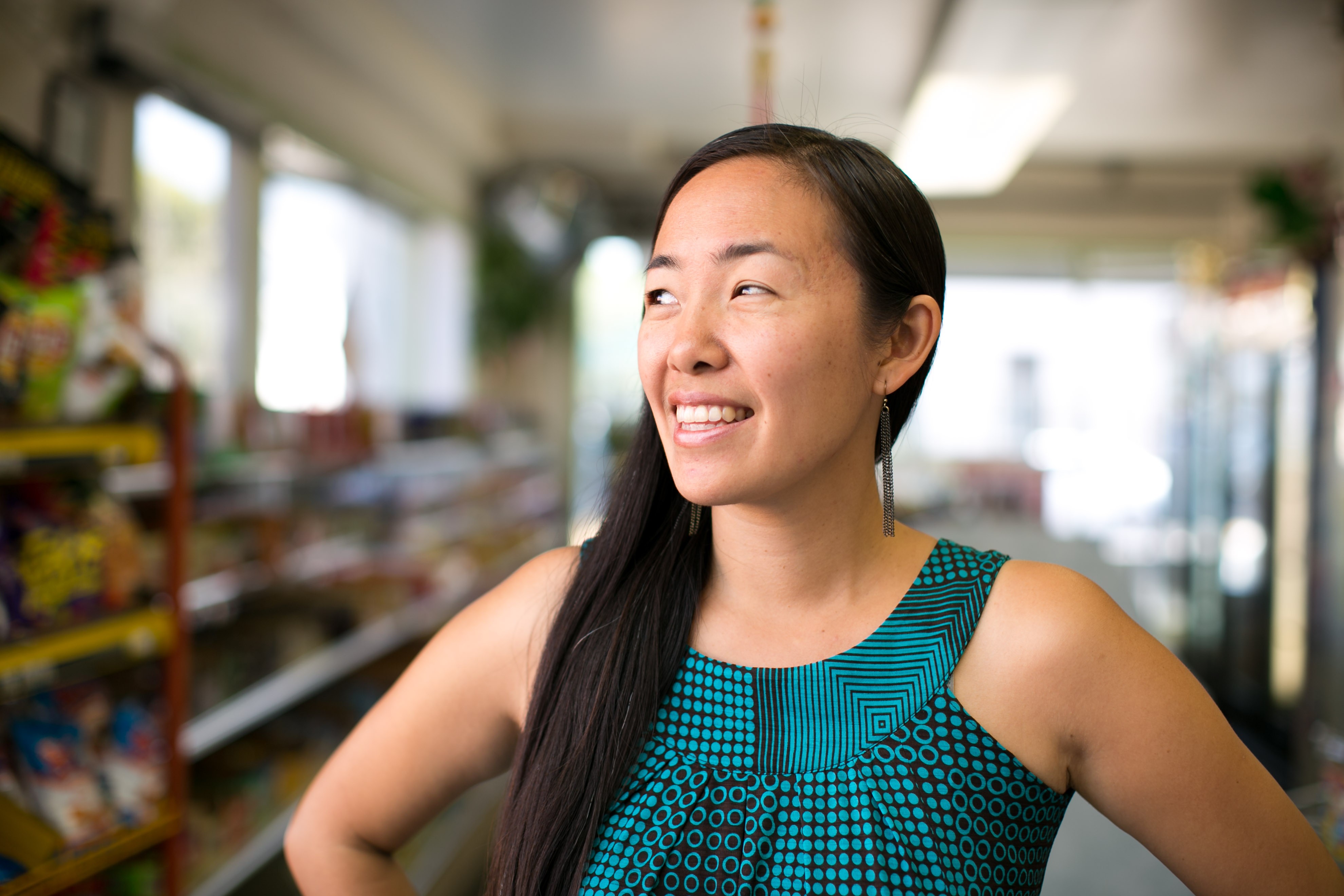
Weng, who recently became an Oakland Chinatown Chamber of Commerce board member, isn’t the only one in Oakland who’s holding up the tech industry as the city’s savior. Indeed, it feels at times as though the bulk of the city’s elected officials have taken that stance. Still, it’s easy to imagine how Chinatown’s fundamental character would change if every business adopted Weng’s approach — that is, if everyone decided the tech worker was the ideal customer, and that the low-income monolingual Chinatown senior was someone whose business was expendable.
At the end of the day, the fact that a neighborhood chamber of commerce is pro-development and somewhat conservative with respect to the minimum wage is hardly surprising. After all, the chamber’s mission is to promote business interests. But it does lend credence to the idea that the chamber is out of step with neighborhood activists and others who fear for the cultural legacy of Chinatown and worry that low-income residents and immigrants are being priced out. That’s the question, then: When all of that development comes, and when the techies start moving into the neighborhood in large numbers, what’s to prevent Oakland Chinatown from going the way of DC’s? And who is to say that the policies the chamber is advocating won’t really be the “final nail to the coffin” for Oakland Chinatown?
When Sonny Le asked me who in Chinatown was speaking up on behalf of low-income, marginalized workers and residents, I took it as a rhetorical question. As it turned out, an October 5 gathering of community leaders at the Oakland Chinatown office of the Asian Pacific Environmental Network (APEN) was the closest thing I found to an answer.
APEN is an Oakland-based environmental justice organization that has focused much of its activism on tenants’ rights, development, and affordable housing. One of the nonprofit’s signature campaigns was a five-year effort to prevent the eviction of more than forty low-income tenants from affordable housing units at the Pacific Renaissance Plaza. At APEN’s Chinatown office, the snack spread (clusters of grapes and a tin of flaky Chinese pastries) was typically Asian, but it was Malcolm X’s words — not those of, say, some Chinese Buddhist philosopher — that adorned a poster on the wall: “Don’t ever accuse a Black man for voicing his resentment and dissatisfaction over the criminal condition of his people as being responsible for inciting a situation. You have to indict the society that allows these things to exist.”
About thirty neighborhood activists, religious leaders, and nonprofit representatives had crowded into this small office space to talk about the future of Oakland Chinatown. One by one, each person gave a little introduction about the organization he or she represented and talked about their hopes and dreams for the neighborhood — about crime reduction, graffiti abatement, and traffic mitigation. Mostly, though, the group talked about the housing crisis, the tech boom, and a growing sense that, as much as rent in Chinatown has soared in the past few years, things were just now about to get really crazy.
“There’s a serious threat of displacement,” said Ener Chiu, who moderated the discussion along with APEN lead community organizer Alvina Wong, in his opening remarks.
Chiu — a commercial planning manager with the East Bay Asian Local Development Corporation (EBALDC), which develops and manages affordable housing projects, and serves as office landlord to many Oakland-based nonprofits — told me that Chinatown leaders had been meeting to talk about development issues since 2009, but that the recent gathering was by far the most comprehensive in terms of stakeholders represented in one room: public health advocates, providers of legal services for low-income Asians and Pacific Islanders, leaders of 100-plus-year-old churches in Chinatown, and more. As a result, the meeting had a circle-the-wagons, all-hands-on-deck feeling. Nearly everyone in the room seemed to agree that Chinatown was facing a looming crisis.
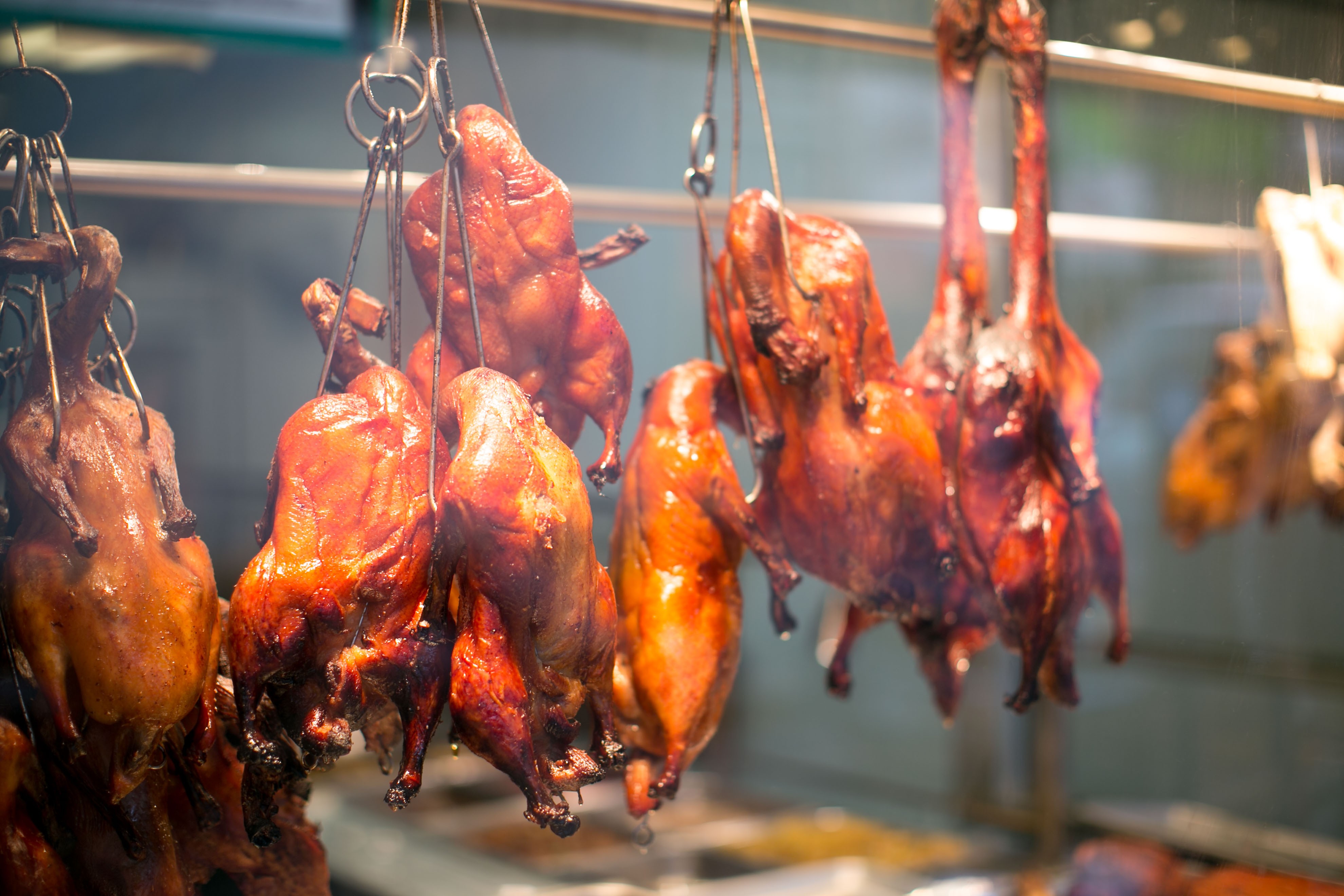
There was one notable absence: No one from the Oakland Chinatown Chamber of Commerce had been invited. It wasn’t an oversight. The chamber was originally part of a coalition of Chinatown community leaders that met a few years ago to come up with a set of recommendations for the City of Oakland when it was putting together the Lake Merritt BART Station Area Plan — a 25-year blueprint for the future development of the roughly half-mile radius of land around the BART station, which includes Chinatown. But due to a range of disagreements, the chamber eventually left the coalition. At the heart of the rift were fundamentally different philosophies with regard to affordable housing. While the chamber pushed for as much market-rate development as possible, progressive nonprofits such as APEN and EBALDC advocated for tenant protections and affordable housing to make sure that low-income immigrants would still be able to live in the neighborhood. Activists also feared that allowing tall buildings would add even more pressure to the area’s already soaring rental market.
“If you allow twenty-story buildings, or fifty-story buildings, to go up, it increases property values,” argued Timmy Lu, APEN’s State Organizing Director, in a phone interview. “That’s where things get hot, even if you’re all operating from a place of, ‘We want to do what’s best for the community.'”
The Chinatown coalition’s proposal would have allowed developers to build high-rises — but only if they agreed to implement certain community benefits, including contributing funds that would go toward the construction of affordable housing. All told, the coalition wanted 30 percent of the units in any new development to be set aside as affordable housing.
The October 5 meeting at the APEN office was largely an effort by community leaders to regroup in the aftermath of the Lake Merritt BART Station Area Plan, the final version of which was approved by the city in 2014. Ultimately, Chiu and others said the plan turned out to be a resounding defeat for their efforts: Although the city council enacted height restrictions of a relatively modest 85 feet at the core of Chinatown, it zoned lots of land all along the neighborhood’s perimeter to allow for 275-foot-tall buildings. And while the plan adopted by the council mentions many of the community benefits that groups like APEN and EBALDC had pushed for, it doesn’t structure the zoning regulations in a way that provide any mechanism to ensure that they’ll happen. The council, for example, did not require high-rise developers to pay for affordable housing.
In an interview, Chiu said it’s not that EBALDC doesn’t think market-rate housing ought to be built in Chinatown, particularly larger market-rate units that can help attract middle-class families back to the neighborhood. There shouldn’t be this binary choice between unrestricted development and no development at all, he said. Rather, it’s a matter of making sure the development is scaled in such a way that it doesn’t price out poor people. “If prices force our constituencies out, then you end up with Washington, DC: hollowed out — the names of McDonald’s and Starbucks in Chinese, and pagoda orientalism, but no working-class Chinese people living there anymore,” Chiu said.
Chiu also believes the chamber underestimates the extent to which low-income seniors are actually the backbone of Chinatown’s traditional businesses. While these elders’ annual income may only be $20,000, they spend money at the shops and restaurants every day, and deposit their savings in the neighborhood’s many banks. As for the San Francisco tech workers who live in those nice condos in Oakland Chinatown — the ones that restaurateurs such as Weng are so eager to attract? Chiu said most of the ones he knows shop for groceries at Whole Foods or Trader Joe’s.
As APEN’s Alvina Wong put it, “I’m not saying that Chinatown should always be poor, but it’s about staying true to the character of the neighborhood and making sure it’s still a place that new immigrants and longtime immigrants can survive and thrive in.”
For his part, Carl Chan is adamant that he does care about the low-wage worker — the person that he, too, describes as the “backbone” of Oakland Chinatown. According to Chan, anyone who has invested time and energy in Chinatown over the years has an obligation to protect that worker. Despite the chamber’s displeasure with the minimum wage increase, Chan said he has been encouraging business owners to comply with the law so that workers receive every penny to which they are entitled, and he has told employers not to try any “funny business,” such as manipulating their workers’ on-the-book hours.
Chan and Ong say the chamber has also been trying to help struggling businesses. They say they want to start an outdoor night market that will run on weekends during the summer, as a way to draw more customers to the neighborhood and highlight local restaurants. In a few cases, Chan said, they’ve been able to help shop owners quietly renegotiate their leases. He said the chamber has also approached city officials about the possibility of offering microloans to some of these small business owners. “If they need help filling out a form, we are happy to do that,” he said.
But neighborhood activists at APEN and EBALDC say they’re concerned about property owners who are jacking up rents and trying to cash in on the big tech boom. And Wong, APEN’s community organizer, said she has heard story after story about Chinatown businesses not paying their employees the new minimum wage. In response, she and her colleagues recently started the process of trying to connect workers to resources that will help them advocate for themselves.
What the drastic changes occurring in other Chinatowns across the country make clear is that the forces of gentrification and displacement are a reality that can’t be ignored. The 2013 Asian American Legal Defense Fund report found that local government policies “encouraged and assisted the gutting of Chinatowns” in Boston, New York, and Philadelphia, in part by promoting the construction of luxury condos in those neighborhoods. In Boston, this was exacerbated by the fact that a hospital and several university campuses took over large sections of the Chinatown area. The result? Census data showed that between 1990 and 2010 the proportion of white residents in Boston Chinatown had more than doubled while the percentage of Asians dropped from 70 percent of the total population to just 46 percent. At the same time, housing values in Boston Chinatown had soared to nearly double that of the city as a whole by 2010, and the percentage of multi-generational family households and foreign-born residents — both hallmarks of a traditional Chinatown — saw a sharp decline.
And in DC, the mostly Chinese tenants in the Museum Square apartment complex — one of only two remaining Section 8 buildings in Chinatown — have avoided eviction thus far only because of a city law that requires landlords to offer tenants the opportunity to buy a building before it can be demolished to make way for new development. The Washington Post has reported, however, that the owner is asking for more than $800,000 per apartment — far more than the building’s low-income tenants can afford.
At the October meeting at APEN, the community leaders in attendance had no shortage of ideas for how to save Oakland Chinatown. Ken Wong, administrative director at the Chinese Independent Baptist Church, brought up the idea of appealing to the sense of “legacy” on the part of longtime property owners, who might be willing to sell their property for a discounted rate if they felt it was for something that would benefit the community. He cited the nonprofit community health center Asian Health Services, which purchased the former Silver Dragon Restaurant in 2011, as one example of this approach and said he’s aware of religious organizations in Chinatown that have done the same thing.
Julia Liou, planning and development director for Asian Health Services, argued that nonprofits can be an engine of economic activity for the neighborhood. Even now, folks who had moved away from Oakland Chinatown routinely come back to see one of the clinic’s Chinese- or Vietnamese-speaking doctors, and then eat a meal and do some shopping while they’re there. (One thing 99 Ranch Market doesn’t have is an Asian Health Services.) And, because of the clinic’s need for staff members who speak their patients’ native languages and understand their culture, Asian Health Services also provides employment to many Chinatown residents. “We’re a model for the community overall, in terms of sustainability,” Liou said in a phone interview.
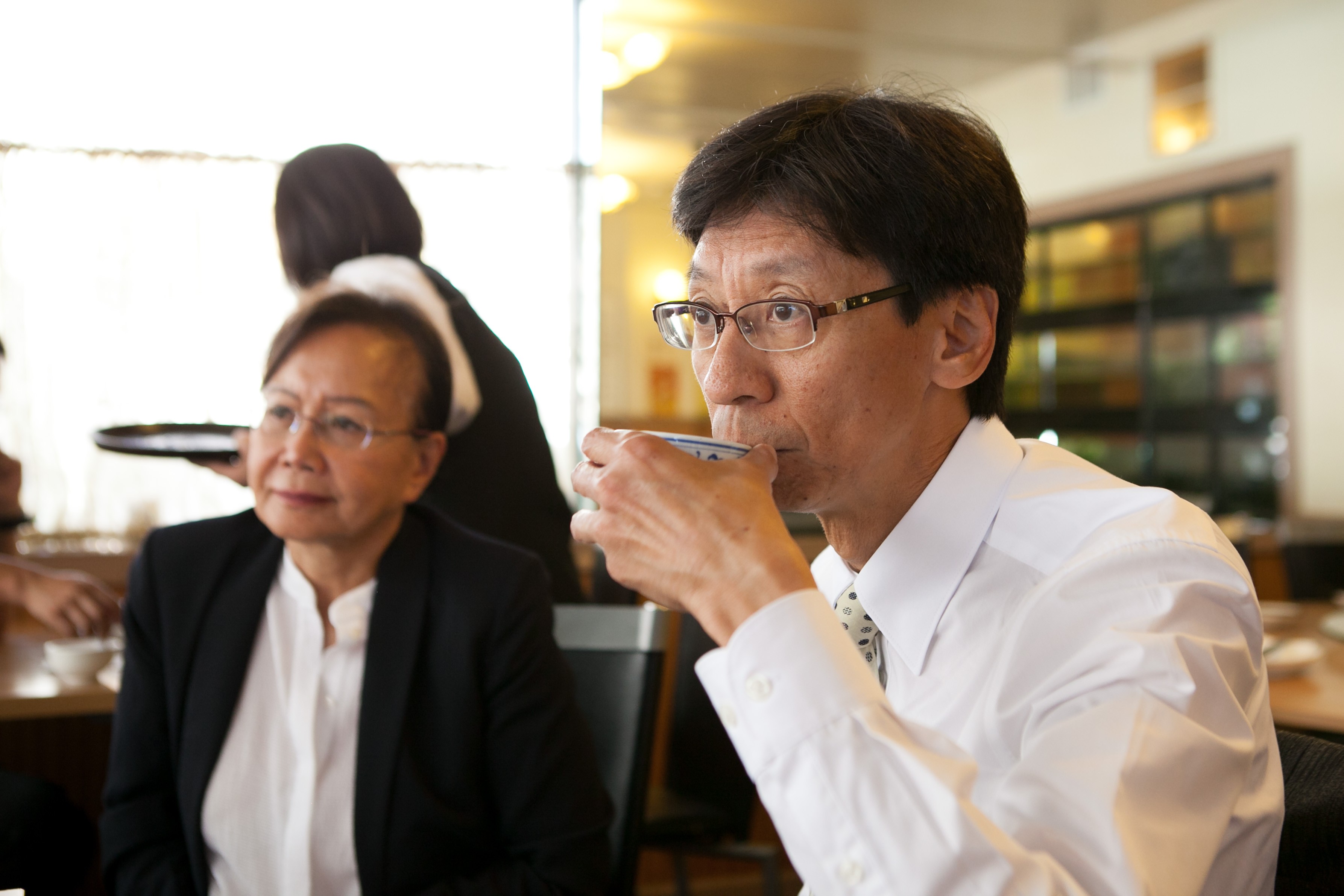
And EBALDC’s Chiu agrees with the chamber about the need for some of the older Chinatown restaurants to modernize — to make them worth the higher prices they’d like to charge. At the same time, he stressed the importance of preserving affordable options for the neighborhood’s current residents. Chiu mentioned Swan’s Market, Old Oakland’s now-thriving gourmet food court, which EBALDC manages, as a possible model: The food is good enough to attract people from all over the city, but the restaurants are also encouraged to always offer a menu item that costs less than five dollars, so that anyone can walk in off the street and enjoy a dignified meal.
There’s also no question that plenty of good things are already happening in Chinatown: Artists have collaborated with local businesses to clean up tagged buildings and replace the graffiti with murals. The Lincoln Square Recreation Center has been widely lauded for its role as a vibrant community hub that caters to both Chinatown seniors and the diverse mix of teenagers who attend nearby schools. And restaurants specializing in relatively obscure regional Chinese cuisines have opened and are thriving.
But with skyrocketing rents sweeping through the downtown, Jack London, and Lake Merritt BART station areas, there’s also no question that many longtime residents are in serious danger of being displaced. What might save Oakland from the fate of other Chinatowns around the country may be the simple fact that so many members of the community are deeply committed to preserving Chinatown and have gotten together to make plans in a strategic way. Huen, the anti-displacement activist, said that was something that seemed to be missing in Washington, DC.
“I want to believe that the Oakland chamber does care more, relative to the Chinatown in DC,” Huen said. “They do care more about preserving our history and our culture. They’re not going to just sell it to the highest bidder.”
The key, she added, is for Chinatown’s community leaders to organize to fend off that threat. And, for now, she’s hopeful. “I think the narrative that Oakland’s going to be destroyed is not quite accurate.”


